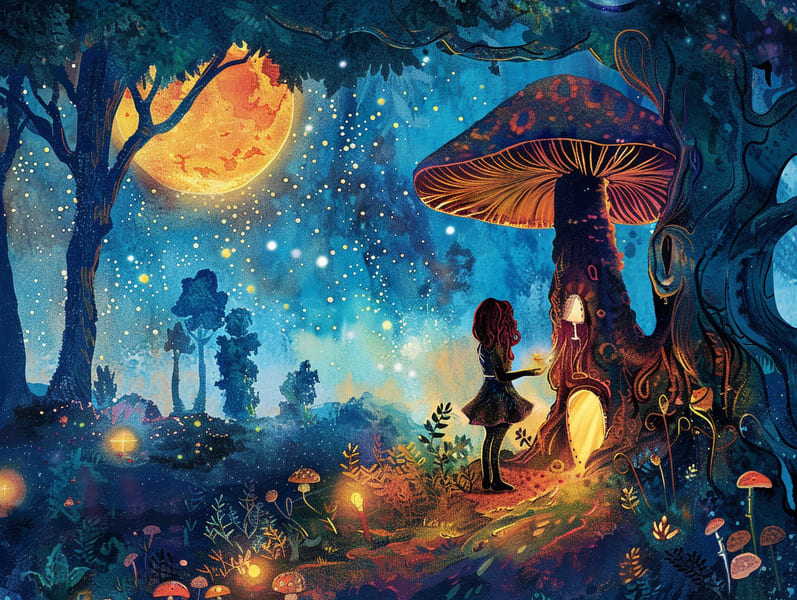Exploring the Roots of Ancient Fairy Tales with Their Undying Charm.
Exploring the Roots of Ancient Fairy Tales with Their Undying Charm.
Blog Article

Children's fairy tales have old origins. These tales have been recounted from one generation to the next well before they were ever published. They developed from a variety of civilizations, including Indigenous traditions. They were initially told among elders, often carrying themes and messages related to the societal norms and beliefs of the time.
The renowned Brothers Grimm, Jacob and Wilhelm (the Grimm brothers), were among the first to collect many of these beloved fairy tales. Their collection, "Grimm's Fairy Stories," included stories like "The True Bride," "Little Brother and Little Sister," and "The True Story of Snow White," which have since become mainstays in the world of traditional fairy tales. Similarly, the Danish author's magical tales, such as "The Story of the Little Mermaid," and "The Little Duckling," have gained the love worldwide, establishing their place in the pantheon of timeless fairy tales.
Despite their age, traditional fairy tales remain as meaningful as ever, especially as children's bedtime stories. These enchanting tales are now available in diverse formats, including vibrantly illustrated books, fantastical animations, and online storybooks.
Their continued relevance can be ascribed to several whimsical characteristics:
Crucial Morals: Ancient fairy tales often teach important moral lessons. Narratives like "The Boy Who Cried Wolf" teach the significance of honesty, while "The Hare and the Tortoise" stress the traits of perseverance and meekness. These tales offer young ones clear distinctions between truth and falsehood, forming their moral compass in a kind yet deep way.
Kindness and Comprehension: Traditional fairy tales frequently showcase personalities facing trials and tribulations, fostering young readers to connect with their struggles and encourage their triumphs. For instance, "Beauty and Her Beast" teaches us the significance of valuing inner qualities to acknowledge the true nature of a soul, enhancing compassion and appreciation.
Cultural Appreciation: Many timeless fairy tales are saturated in the cultural contexts from which they grew. Understanding these fairy tales can provide captivating looks into different traditions, fostering a sense of global understanding and awareness.
Fantasy and Imagination: The fantastical elements in classic fairy tales—mythical creatures—enliven children’s creativity. These stories carry readers to fantasy realms, stimulating imaginative ideas and a sense of curiosity that lasts a lifetime.
Classic fairy tales are not only fantastical but also edifying. They provide charming tools in promoting various cognitive and emotional skills in kids. When old fairy tales are read aloud, they promote speech development by introducing new linguistic elements and elaborate sentence structures. This practice also nurtures hearing perception and mental focus, as kids focus on every detail, prepared to see what happens next.
Furthermore, contemplating the themes and characters of old fairy tales can promote reasoning skills and problem-solving abilities. Young readers are shown to find patterns, make predictions, and realize cause and effect. These examinations also ease young readers speak out their thoughts and feelings, adding to their emotional intelligence.
In today’s online age, the proliferation of online storybooks has made these narratives more within reach than ever. Web-based platforms and mobile apps feature comprehensive collections of timeless fairy tales that can be perused or listened on anytime, anywhere. Fairy tales read out loud are particularly favored, sharing an enjoyable way for children to engage with these magical stories. Audio stories and read-out-loud videos lead characters and settings to life, often paired with magical background sounds and tunes that boost the story journey.
The timeless charm of classic fairy tales lies in their ability to evolve to current eras while preserving their key morals. Contemporary retellings of these narratives often showcase more diverse protagonists and modern settings, making them relatable to today’s audience. However, the underlying themes of boldness, humanity, and righteousness remain unchanged, continuing to affect young listeners of all ages.
Timeless fairy tales also offer a sense of coziness and recognition. They bring a methodical narrative with a definite beginning, middle, and end, often winding up with the wrap-up of conflicts and the triumph of morality over wickedness. This uniformity can be soothing for young readers, showcasing a sense of firmness in an fluid world.
Classic fairy tales continue to bewitch and guide new generations, maintaining their elegance and importance in modern society. As kids' bedtime tales, they bequeath a perfect blend of allure and teaching, promoting moral values, empathy, and creativity. The existence of internet fairy tales and the sought after status of fairy tales told out loud secure that these ancient stories remain accessible to new generations.
By keeping and circulating these narratives, we continue to extol the rich tapestry of human imagination and cultural check here heritage. Whether you are discovering a artistically illustrated book, discovering a digital library, or hearing an narrated book, the mystique of bedtime fairy tales is always within reach. These fairy tales reveal of the continued spell of fairy tales and its ability to bind us across epochs and places.
No matter if you are viewing a richly illustrated book, viewing a electronic library, or hearing an spoken story, the fascination of old fairy tales is always within reach.
These tales teach us of the enduring power of storytelling and its ability to bind us across eras and regions, establishing a link that charms and informs alike.